Related Content
Content
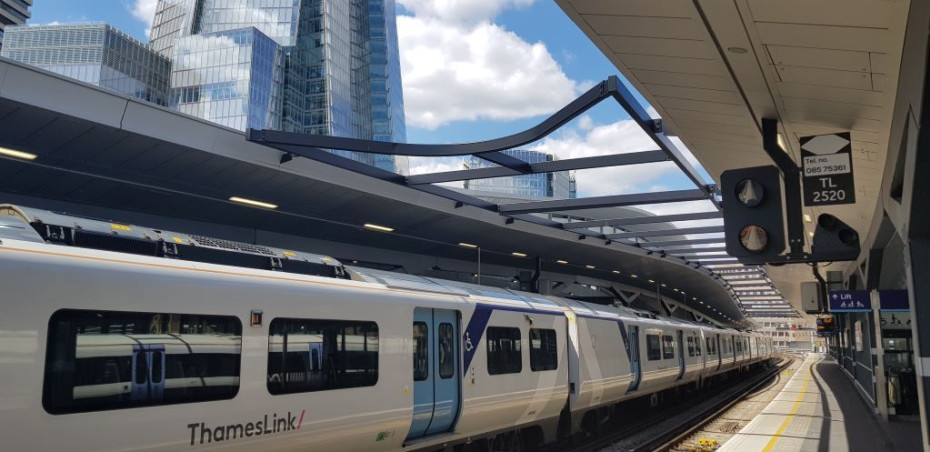
Share
The guides on how to travel between London Bridge and the other London stations are focused on, or at least include, the easiest routes, so that the simpler alternatives when travelling with heavy luggage or with young children etc can be followed.
London Bridge is unusual among the stations which serve central London because it is not a terminus, so other mainline, non-Underground trains, link it to other areas of the city centre, including direct links to other mainline stations.
At weekends the Underground lines and both the Elizabeth line and Thameslink trains can be impacted by construction work, those affecting the Underground and Elizabeth line trains can be looked up here, while those impacting the Thameslink trains, can be found here.
A Summary of how the ticketing works
All of the ticket gates at central London stations have 'readers' which enable contactless payment.
Regardless of whether you are resident in the UK, or are visiting, there are three methods of using Contactless:
- A payment app on a mobile device, including your bank's contactless payment app, or the likes of Google Pay, Apple Pay, or Samsung Pay.
- A debit / credit card as long as it has the contactless symbol
- An Oyster card (you touch in and out as you do when using Contactless).
Good to know about using Contactless
- The system works by touching in and out.
- When using bank cards, take care to use the same card when touching out at the end of a journey, as you did when touching in at the start.
- You have to pay with Contactless on the regular red buses, you cannot pay with cash.
- When travelling by the Underground or Elizabeth line, you can save 10 - 20p per journey by paying with a banking app / card instead of an Oyster card.
- Making a Contactless payment is cheaper than buying a ticket from a station counter or machine - the price difference is usually at least 50%!
More info is available on the general London by train guide.
From London Bridge:
London Bridge station is located on the south-eastern corner of central London, but the Southeastern and Thameslink trains continue beyond London Bridge to call at other mainline stations closer to the city centre.
So taking these trains services can be a better option than taking the Underground, because they connect to different areas of the city than the Jubilee and Northern Lines, which are the two Underground lines, which serve London Bridge; particularly as it takes around 3 - 5 minutes to reach the Underground trains when stepping off a train at London Bridge.
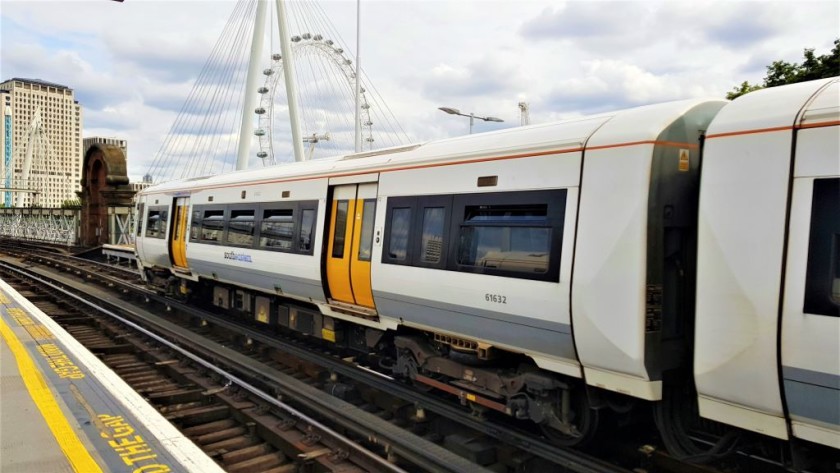
Up to 17 Southeastern trains per hour depart from platforms (tracks) 8 and 9 and link London Bridge to both Waterloo and Charing Cross stations.
Up to twelve Thameslink trains per hour leave from platform 5 and call at Blackfriars and at Farringdon where a transfer is available to the Elizabeth line.
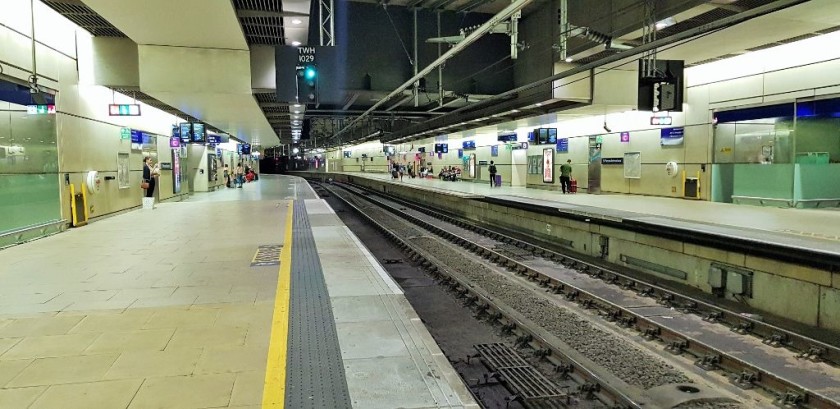
They then go on to St Pancas Thameslink station pictured above, this station is located directly beneath St Pancras International station and is just across the street from King's Cross station.
The guides below do not include Victoria station, because many stations served by trains to London Bridge also have direct trains to Victoria.
When travelling towards London from stations which don't have direct trains to Victoria, interchanges are typically available into trains heading to Victoria at a swathe of other stations including Ashford International. East Croydon, Gatwick Airport, Lewisham and Orpington.
to Euston
Taking a northbound Northern line train on the route via Bank is the only logical way to go, it's a six station journey to Euston, but it will typically take less than 15 minutes.
to King's Cross
Up to twelve Thameslink trains per hour now depart from platform 5 at London Bridge and take 15-20 mins to make the journey to St Pancras Thameslink.
On exiting the Thameslink station in St Pancras, turn left and then go straight ahead towards the exit on the far side of the building, the main departure boards will be over on the right.
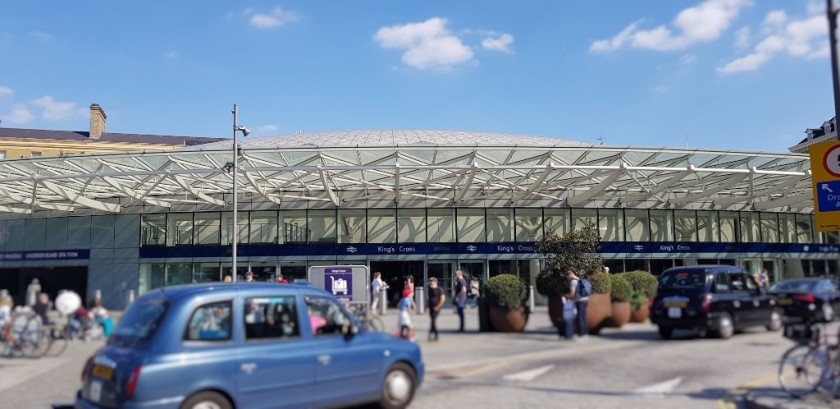
This exit from St Pancras International on to Pancras Road is literally across the street from an entrance to King's Cross, pictured above
So you can avoid having to make fairly lengthy transfers to/from the Northern line at both mainline stations; plus the Thameslink trains will be air-conditioned and they have luggage racks.
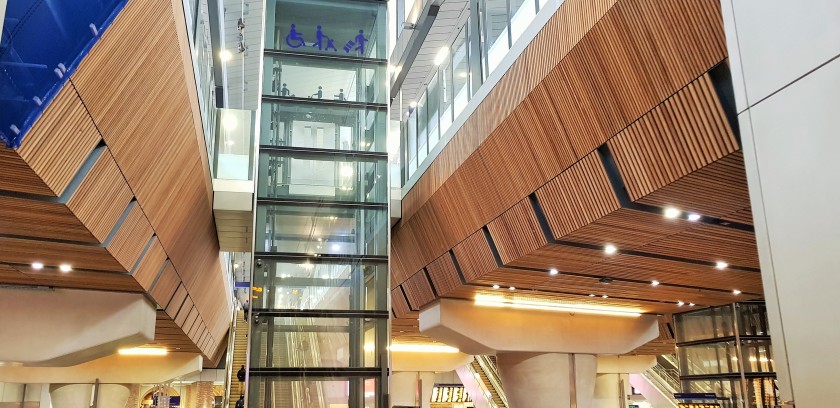
Step free access by lift (elevator), to and from the Thameslink trains, is also available at both London Bridge and St Pancras.
If the Thameslink trains are unavailable or not operating to their usual timetable, the northbound Northern line trains provide an alternative.
to Liverpool Street
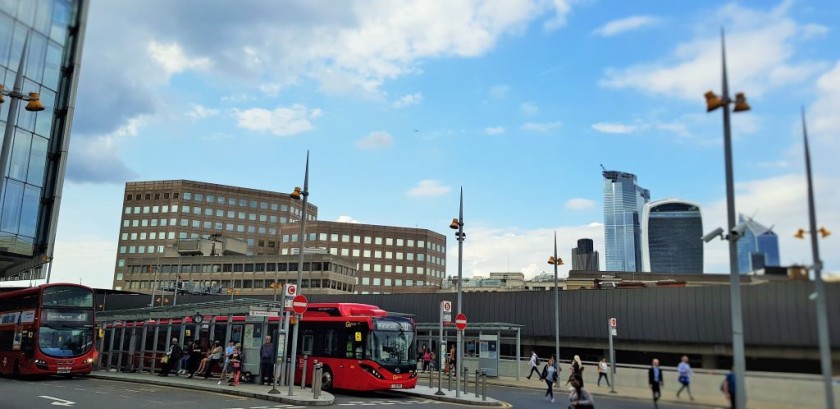
The seemingly obvious route for a London Bridge to Liverpool Street station transfer is to travel via Bank station on a combination of northbound Northern line and eastbound Central line trains, but the interchange at Bank is comparatively awkward.
So taking the bus is a good alternative; routes 149 and 388 leave from stop A in the bus station, which is in front of the upper level exit; the part of London Bridge station which is by The Shard.
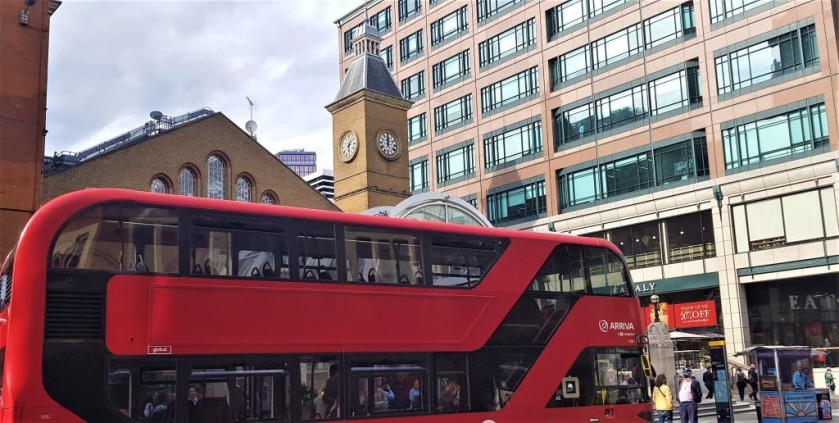
Then the stop at Liverpool Street is by some escalators which lead down to the station concourse, from where all the trains can be accessed; a lift (elevator)
Though there is now also a route on which lifts (elevators) can be used to make the transfer between trains, though it is indirect.
- Take a Thameslink train from platform 5 at London Bridge to Farringdon

- Take the escalators by the exit shown below, directly down to the eastbound Elizabeth line.
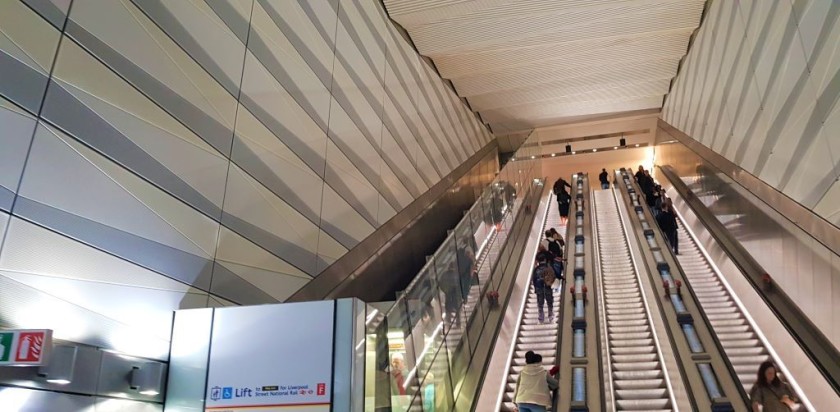
- At Liverpool Street escalators and a lift (elevator) are available up to the ticket hall of Liverpool Street Underground station.
- Exit on to the main concourse through the ticket hall, a lift (elevator) is available to the right of a short flight of stairs.
to Paddington and Marylebone
If you are happy to use escalators and squeeze on to tube trains, then typically the quickest route from London Bridge to Paddington is to take the northbound Jubilee line to Baker Street, because at that station a simple cross-platform transfer is available with northbound Bakerloo line trains which call at Paddington ad at Marylebone.
Though an easier option, particularly if you have luggage etc, is to take a Thameslink train to Farringdon, where escalators lead directly down to the westbound Elizabeth line - or there is a route within Farringdon station which involves taking two elevators.
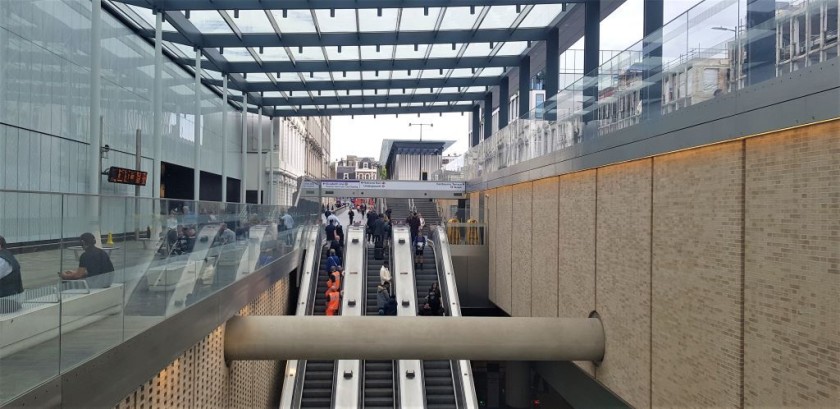
On arrival at Paddington yet more lifts/elevators and escalators link the Elizabeth line to the main concourse, so the access to the onward trains is easier than when arriving at Paddington on the Bakerloo line.
And if a Thameslink departure is due to leave London Bridge within the next 3-5 mins, it can be quicker than taking the Underground.
to St Pancras International
Up to twelve Thameslink trains per hour now depart from platform 5 at London Bridge and take 15-20 mins to make the journey to St Pancras Thameslink.
The departure areas for the EMR and Southeastern trains are immediately above the exit from the Thameslink station, and the check-in for Eurostar departures is less than a minute's walk; go straight ahead and then over to the left.
So you can avoid having to make fairly lengthy transfers to/from the Northern line at both mainline stations; plus the Thameslink trains will be air-conditioned and they have luggage racks.
Step free access by lift (elevator), to and from the Thameslink trains, is also available at both London Bridge and St Pancras.

If the Thameslink trains are unavailable or not operating to their usual timetable, the northbound Northern line trains provide an alternative.
To London Bridge
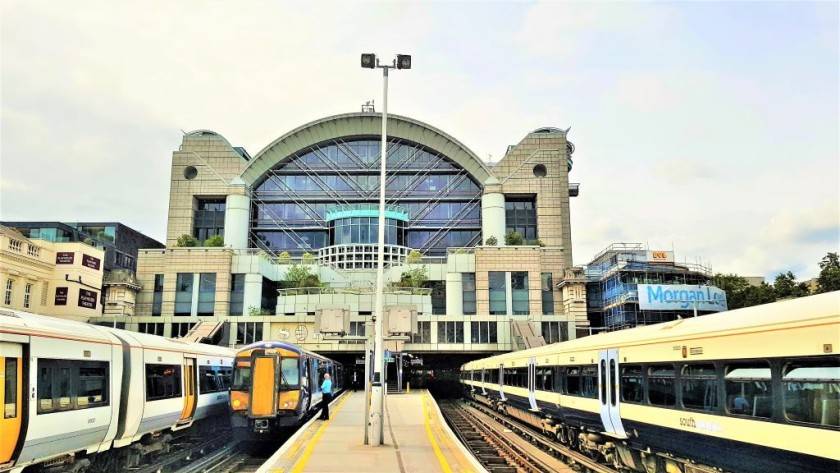
Up to 17 Southeastern trains per hour link Charing Cross, pictured above, and Waterloo stations to London Bridge.
Thameslink trains also provide an alternative to taking the Northern line of the Underground from King's Cross and St Pancras.
from Euston
Taking a southbound Northern line train on the route via Bank is the only logical way to go, it's a six station journey to London Bridge from Euston, but it will typically take less than 15 minutes.
from King's Cross
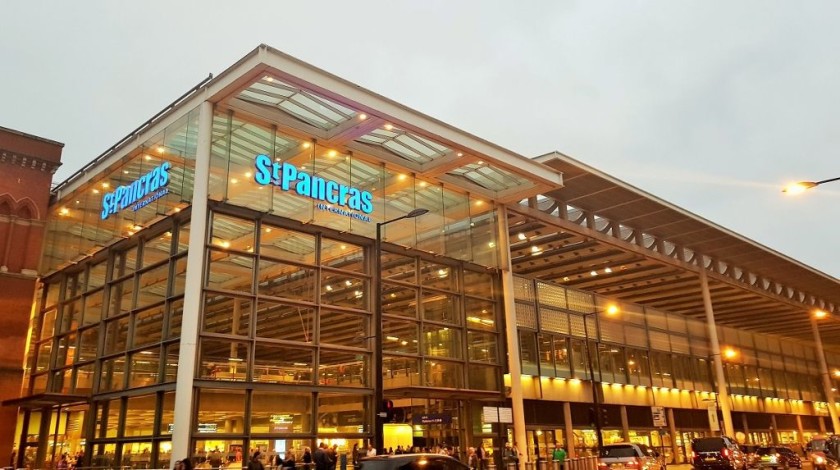
The easiest route, particularly if you have luggage, is to head over the street to St Pancras station, using the exit at King's Cross on to Pancras Road, which leads off from the main concourse on the opposite side to the departure boards.
Once you have entered St Pancras International station go straight ahead and you will then see the entrance to the part of the station, used by Thameslink trains, over to the right, on the other side of a ticket desk.
Lifts (elevators)and relatively short escalators are available down to the platform/track used by the southbound Thameslink trains, which is platform A.
Up to 12 trains per hour now depart from platform A and take just over fifteen minutes to make the journey to London Bridge station, though note the trains heading towards Sutton from St Pancras don't go to London Bridge.
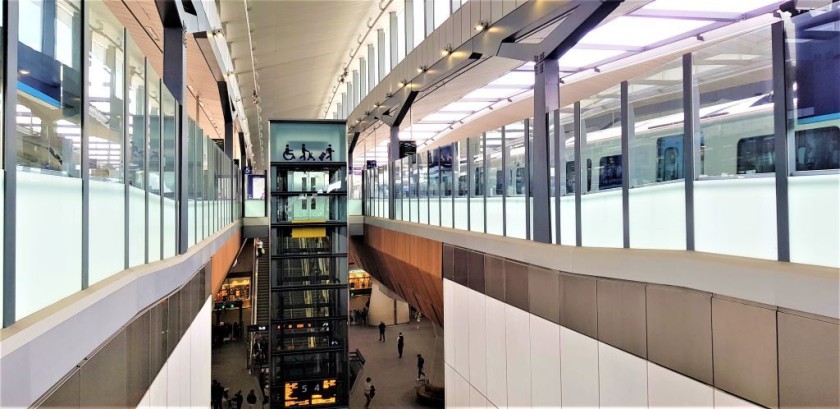
At London Bridge lifts (elevators) and escalators link the Thameslink trains to the main concourse, from where step-free access by other lifts and escalators is available to all of the other platforms/tracks in the station.
Though the Thameslink trains typically head on beyond London Bridge to multiple locations including Brighton, Gatwick Airport and Rainham via Greenwich and Woolwich.
All trains from Cannon Street and Charing Cross stations now call at London Bridge, so there is no need to make the comparatively awkward transfers to either of those stations from King's Cross.
So you can avoid having to make the transfers down into a 'tube' line at both King's Cross and London Bridge, plus the Thameslink trains will be air-conditioned and they have luggage racks.
Though when the Thameslink trains aren't available due to construction work, the southbound Northern line provides the alternative.
from Liverpool Street
The seemingly obvious route for a Liverpool Street to London Bridge station transfer is to travel via Bank station on a combination of westbound Central line and southbound Northern line trains, but the transfer in Bank is comparatively awkward.
The route which SMTJ takes when I don't have luggage is to head over to bus stop K on the street named Bishopsgate to board bus routes/lines149 and 388, as they terminate in front of the upper level entrance to London Bridge station.
The exit on to Bishopsgate can be accessed from the main concourse by escalators and a lift (elevator) is also available, then on the upper concourse at London Bridge, a lift and escalators are available to the lower concourse from where the departures by Southeastern and Thameslink trains can be accessed.
Though if you want a step-free journey which doesn't involve taking a bus, two other options are available:
- Take an eastbound Circle Line train to Cannon Street and then take any train from there to London Bridge; though if your ultimate destination can be reached from Cannon Street, this is the way to go; Cannot Street typically has four trains per hour to Greenwich.
- Take a westbound Elizabeth line train to Farringdon and then a southbound Thameslink train.
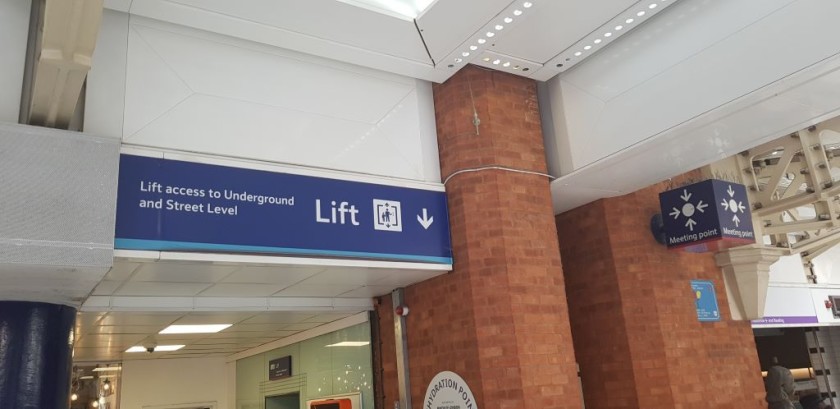
The route to follow is:
- The Elizabeth line can be accessed through the main Underground station ticket hall at Liverpool Street, but the steps down into it can be avoided by taking the lift (elevator) to the left of the staircase.
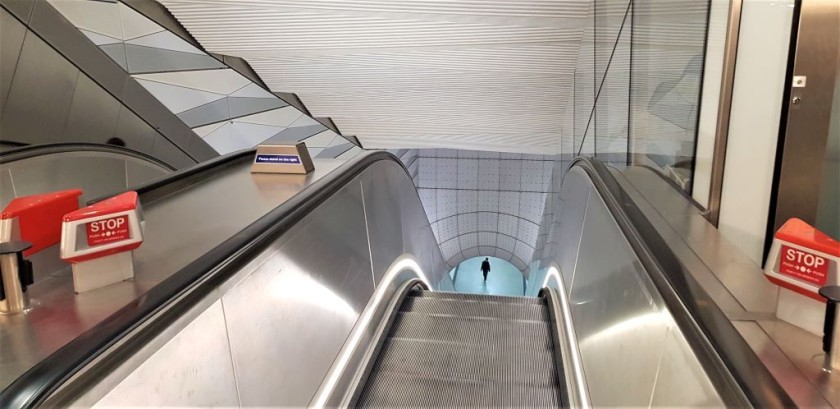
- Then once you have passed through the ticket gates, and escalator and a lift (elevator) is available down to the Elizabeth line.
-At Farringdon the escalators lead up to the northbound Thameslink platform, but the lift provides the direct route to the southbound Thameslink trains, up to 12 trains per hour will depart for London Bridge.
- On arrival at London Bridge, a lift and escalators are available to the lower concourse from where all of the other platforms in the station have step-free access.
from Paddington
The typically quickest route from Paddington to London Bridge is to take the Bakerloo Line to Baker Street, where a short walk through a passage way connects to the eastbound Jubilee Line.
Though if you will be travelling with luggage etc, the easier route is to take the Elizabeth line to Farringdon where an lift (elevator) is now available to the southbound Thameslink trains; and there will typically be twelve departures per hour from Farringdon on to London Bridge.
Then at London Bridge an elevator/lift will link the Thameslink platform to the main concourse, from where all departures have step-free access.
Though the Thameslink trains go direct from Farringdon to numerous destinations including Brighton and Gatwick Airport and Rainham via Greenwich.
from St Pancras International

Lifts (elevators) and relatively short escalators are available down to platform/track A used by the southbound Thameslink trains.
Up to 12 trains per hour now take just over 15 minutes to travel from St Pancras to London Bridge station, though note the trains heading towards Sutton from St Pancras don't go to London Bridge.
At London Bridge a lift (elevator)and escalators link the Thameslink trains to the main concourse, from where step-free access by other lifts and escalators is available to all of the other platforms/tracks in the station.
Though the Thameslink trains typically head on beyond London Bridge to multiple locations including Brighton, Gatwick Airport. Greenwich and Woolwich.
All trains from Cannon Street and Charing Cross stations now call at London Bridge, so there is no need to make the comparatively awkward transfers to either of those stations from St Pancras.
So you can avoid having to make fairly lengthy transfers from and to the Northern line trains at both St Pancras and London Bridge stations, plus the Thameslink trains will be air-conditioned and they have luggage racks.
Though when the Thameslink trains aren't available due to construction work, the Northern line of the Underground provides an alternative.
Please support ShowMeTheJourney
This second version of ShowMeTheJourney is exciting and new, so we are genuinely thrilled that you are here and reading this, but we also need your help.
We’re striving not to let anything get in the way of providing the most useful service possible, hence a facility has been set up with DonorBox which can be used to support the running costs and make improvements.
Instead of advertising or paywalls, your financial support will make a positive difference to delivering an enhanced service, as there’s a lot of ideas which we want to make happen.
So if you have found the info provided here to be useful, please go here to say thank you.

Simon Harper
I wanted to share my passion for train travel and explain how anyone can take the fantastic journeys I have taken.

This is one of more than 100 train travel guides available on ShowMeTheJourney, which will make it easier to take the train journeys you want or need to make. As always, all images were captured on trips taken by ShowMeTheJourney.
This second version of ShowMeTheJourney is exciting and new, so we are genuinely thrilled that you are here and reading this, but we also need your help.
We’re striving not to let anything get in the way of providing the most useful service possible, hence a facility has been set up with DonorBox which can be used to support the running costs and make improvements.
Instead of advertising or paywalls, your financial support will make a positive difference to delivering an enhanced service, as there’s a lot of ideas which we want to make happen.
So if you have found the info provided here to be useful, please consider saying thank you.



